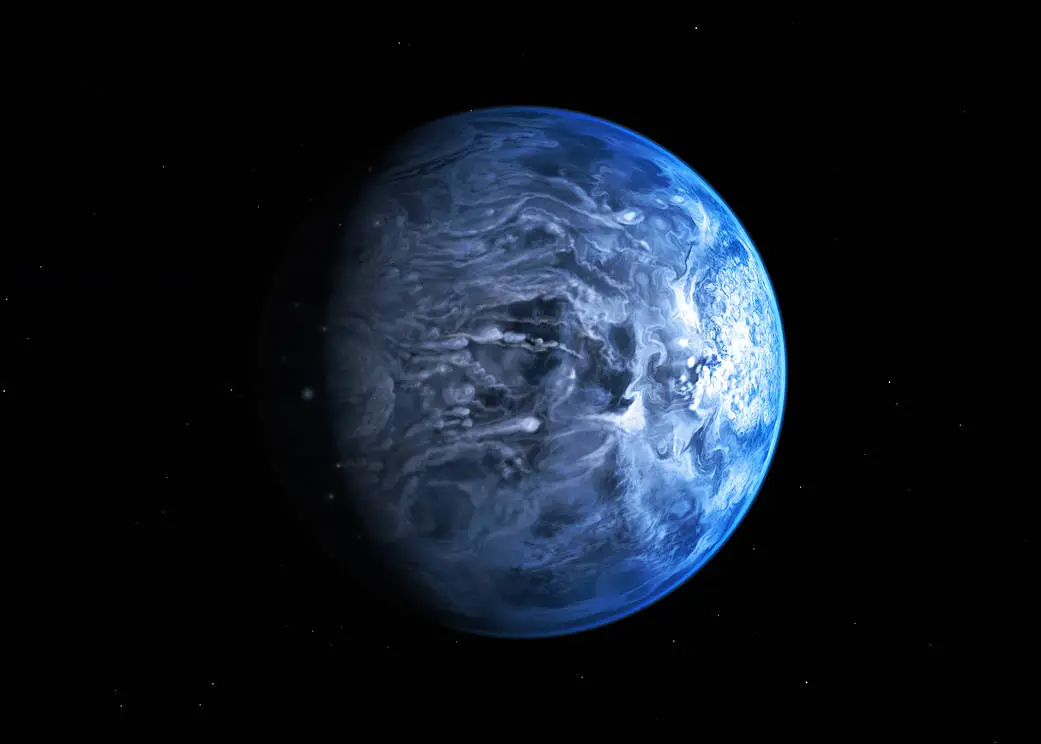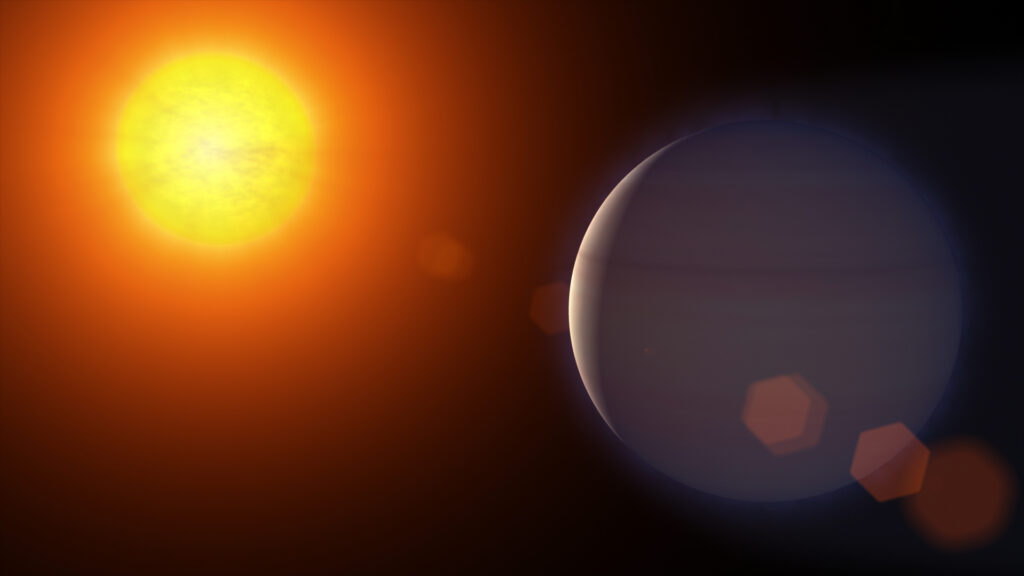
Scientists have discovered hydrogen sulfide, a gas that smells like rotten eggs, in the atmosphere of a Jupiter-like exoplanet named HD 189733b. This finding sheds light on the extreme conditions of this distant world and enhances our understanding of exoplanetary atmospheres.
What is HD 189733b?
HD 189733b, discovered in 2005, is located 64 light-years away in the constellation Vulpecula. This exoplanet, which exists outside our solar system, is about 10 percent larger than Jupiter in diameter and mass.
Despite its deep blue color, HD 189733b is known for its severe atmospheric conditions, including winds up to two kilometers per second (5,400 mph) and temperatures reaching 930 degrees Celsius (1,700 degrees Fahrenheit) on the star-facing side.
The American space agency NASA has described it as a “nightmare world” due to its extreme weather, including rain made of glass that falls sideways due to the fierce winds.
Hydrogen Sulfide Discovered on HD 189733b
New observations by NASA’s James Webb Space Telescope have identified hydrogen sulfide in the exoplanet’s atmosphere, and this marks the first time this gas has been detected outside our solar system. Detailed in the journal Nature, this discovery helps scientists better understand HD 189733b.
According to Guangwei Fu of Johns Hopkins University, the lead author of the study, “This is not a planet we humans want to visit, but a valuable target for furthering our understanding of planetary science.”
What Makes HD 189733b Unique?
HD 189733b is categorized as a “hot Jupiter” because it orbits very close to its star, about 170 times closer than Jupiter is to the sun, completing an orbit every two days compared to Jupiter’s 12 years.
Fu noted that hot Jupiters are rare, found in fewer than one in 100 star systems. He also highlighted the planet’s relatively close proximity to Earth, which makes it bright and ideal for detailed studies. Fu mentioned that hydrogen sulfide would have been much harder to find on planets that are further away.

The James Webb Space Telescope, operational since 2022, observes a wider range of radiation wavelengths than earlier telescopes, allowing for more detailed examinations of exoplanet atmospheres. This capability helped confirm the presence of hydrogen sulfide, water, and carbon dioxide in HD 189733b’s atmosphere.
Astrophysicist Luis Welbanks from Arizona State University, a member of the research team, remarked on the planet’s similarities to Jupiter. He explained that identifying these molecules enables scientists to estimate the amounts of oxygen, carbon, and sulfur in the planet’s atmosphere. This data provides insights into the planet’s formation and how it compares to planets in our solar system.
While the search for life on such a hot planet is not the goal, understanding its atmosphere helps scientists learn how physics and chemistry operate under different conditions, contributing to the broader knowledge of planetary formation.
Featured Image courtesy of NASA
Follow us for more news on space explorations.
